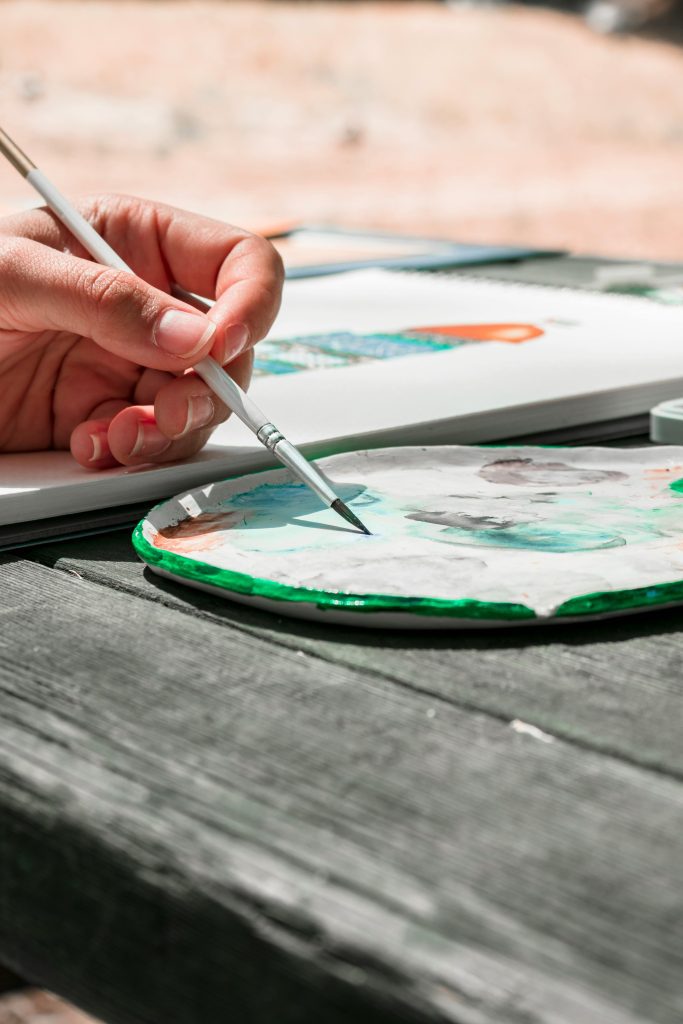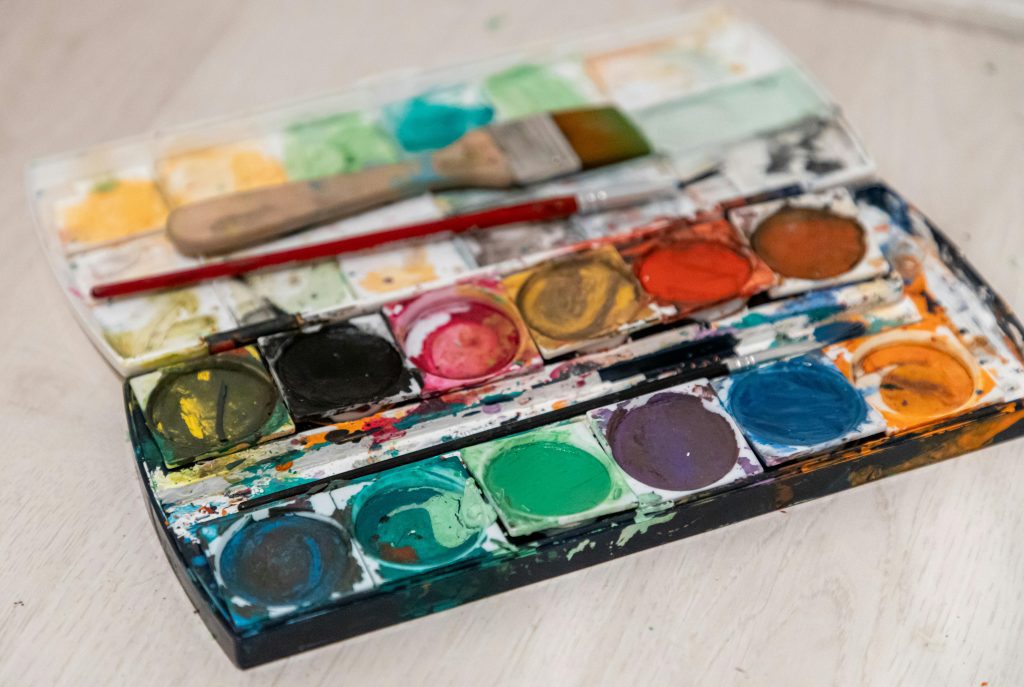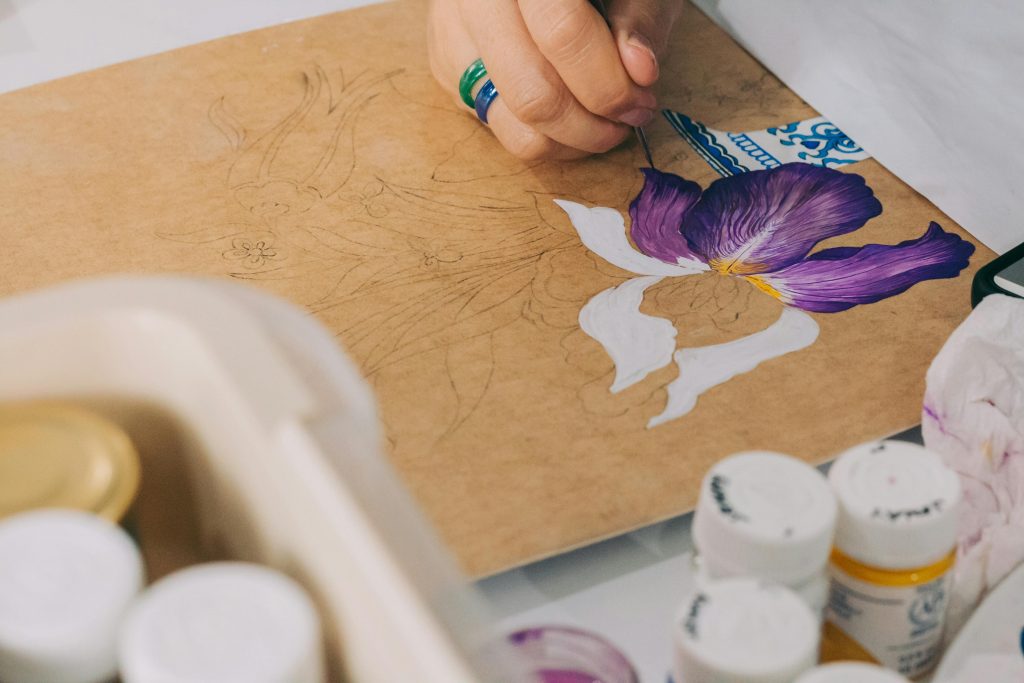Are You Sending Your Art to The Right Place?

Walk into any gallery quietly and just watch for a moment. Notice how the walls don’t feel neutral at all , they hum with a kind of personality. The way pieces are hung, the rhythm of the room, even the pauses between artworks say something about what that space values. Some walls whisper restraint, others pulse with risk, and a few shout with unapologetic boldness. If you pay attention, you realize galleries are speaking long before you ever meet the curator.
Now imagine sending your portfolio into that space without first listening. It’s like answering a question that was never asked. Your work might be brilliant, but brilliance isn’t the only factor. Alignment is. A gallery is less like a blank stage and more like a play mid-performance. If your role doesn’t make sense in the scene, the story breaks.
That’s why researching galleries matters. It’s not homework, it’s translation. It’s learning the dialect a space speaks so you can tell whether your voice will echo or disappear.
And in doing that, you also discover something about yourself , how your own practice fits into larger conversations, what themes you naturally lean toward, and which audiences truly get you.
This isn’t a guide to chasing acceptance, it’s a reminder that choosing the right stage for your work is just as important as creating the work itself. When you begin to see galleries as collaborators rather than gatekeepers, your approach shifts. You stop scattering portfolios everywhere and start building intentional connections.
Because the moment your work walks into a space that understands it, something clicks , not just for the gallery, but for you. And that click is worth every bit of research.

So, What Does a Gallery Actually Want? Let’s Be Real
We often imagine galleries as mysterious gatekeepers, but they’re not twirling mustaches behind the scenes. They’re businesses, communities, and tastemakers all rolled into one. They want art that excites them, yes, but also work that aligns with their collectors and long-term mission. Understanding this is less about cracking a code and more about realizing that a gallery is carefully curating its own identity. That’s why sending your portfolio blind feels like throwing darts with your eyes closed.
The tricky part is that galleries rarely come out and say exactly what they want. Instead, they reveal themselves in subtler ways: the artists they show, the language they use in press releases, even the partnerships they form with local cultural events. If you can read those signals, you’re not just guessing at their taste, you’re decoding their vision. And once you see that vision clearly, you can start asking if your work really fits.
Another truth? Galleries also want artists who understand the bigger picture, not just their own bubble. They look for creators who can contribute to conversations the gallery is already having with its audience. That’s why a painter with political themes might thrive in one space but feel invisible in another. It’s all about that invisible thread of shared purpose.
So when you ask, “What does a gallery want?” the real answer is: connection. They want artists who amplify their story, not just fill empty walls. And once you realize that, research stops being about rejection avoidance and starts being about partnership. That’s where the magic lives.
And here’s the kicker , galleries want you as much as you want them, but only when the fit feels natural. They’re searching for the same click you are. And if you can approach your research with that mindset, you’ll stop seeing them as intimidating and start seeing them as collaborators in a much bigger creative journey.
Stalking Without Being Creepy: How to Read Between the Lines
Let’s be honest, researching galleries can feel a bit like digital stalking. But instead of lurking through vacation photos, you’re studying exhibitions, press clippings, and Instagram posts. The goal isn’t to mimic them or change yourself, but to listen. To hear the undercurrent in their choices and see where your voice might resonate. Done well, this kind of research feels less creepy and more like due diligence.
The first layer is obvious: check their past and current exhibitions. But don’t stop at scrolling through pictures. Read the curatorial statements, notice how they describe the work, and pay attention to the rhythm of their programming.
Do they favor group shows that spark dialogue, or do they lean toward solo exhibitions that dive deep into one perspective? That difference alone tells you volumes about their priorities.
Then look at the details most artists skim over: who comes to their openings? Are their audiences young and experimental, or older and more traditional? Do they host talks, workshops, or community events alongside their shows? These details reveal how the gallery positions itself, and whether your own work thrives in those spaces or feels out of place.
Social media is another goldmine.
The tone of their captions, the hashtags they use, and the kind of engagement they get all point to their personality. A gallery that jokes with followers on Instagram has a very different energy than one posting formal, essay-length captions. Which one speaks your language? That matters more than you think.
Here’s a secret: you don’t have to spend hours digging. Five focused minutes of reading and observation can often tell you more than weeks of vague “research.” The trick is to go deeper than surface-level scrolling. Be curious, ask why they made certain choices, and keep notes about patterns you see emerging.
The result? You stop treating gallery research like a chore and start treating it like a puzzle. One where every piece of information helps you see the bigger picture. And once that picture is clear, you’ll know whether it’s worth stepping into their world , or whether you’d be better off looking elsewhere.
The Hidden Stories in Past Exhibitions
Every gallery has a history, and buried in that history are clues about its future. If you really want to understand a gallery’s vision, start by digging into its past exhibitions. Not just the headline artists, but the mix of voices, mediums, and narratives they’ve chosen over time. That pattern says more than any mission statement ever will.
For instance, you might notice that a gallery consistently features artists who work with themes of memory, migration, or identity. That repetition isn’t random , it’s a signature. If your work intersects with those themes, even tangentially, you already have a thread to pull on. But if your practice is rooted in something entirely different, the mismatch may become obvious.
Don’t just look at the art, look at the way it was framed. Read old exhibition texts, press reviews, and the language used to describe the shows. Some galleries lean into academic writing, others prefer accessible, story-driven explanations. That voice is part of their identity, and it gives you insight into how they want to be perceived.
Pay attention to collaborations too. Did they co-host with a museum, or partner with a grassroots organization? That decision reveals their network and values. A gallery deeply tied to activist groups is unlikely to show purely decorative work, no matter how skillful it is. Conversely, a gallery that partners with luxury brands might prioritize polish and exclusivity.
Another trick is to map timelines. Are they loyal to certain artists, showing them multiple times over the years? Or do they rotate constantly, always chasing the next big thing? This helps you see if they’re interested in long-term relationships or one-off experiments. Both are valid, but knowing which matters for how you approach them.

The bottom line: past exhibitions are like breadcrumbs. Follow them carefully and you’ll see not just what a gallery has done, but where it’s heading. And that knowledge can save you from chasing dead ends or, better yet, help you position your work exactly where it belongs.
Collector Vibes: Who’s Actually Buying the Work?
Here’s the part most artists overlook: galleries don’t just serve artists, they serve collectors. That doesn’t mean you should twist your work to please buyers, but it does mean paying attention to who those buyers are. Because the kind of collector a gallery attracts shapes the kind of art it’s willing to showcase.
At some openings, you’ll see young collectors in sneakers, sipping canned cocktails, and snapping pictures for Instagram. At others, you’ll notice older, suited patrons who move quietly through the space and linger on plaques. Neither group is “better,” but they’re different, and their presence signals the direction of the gallery. Which crowd feels more natural for your work?
This is where research moves beyond walls and into people. Who gets tagged in the gallery’s posts? Who comments or shares? Which names pop up in press articles about acquisitions or sponsorships? Collectors leave traces, and those traces tell you who’s investing in that gallery’s story.
Now, why does this matter?
Because aligning with a gallery means aligning with its audience, too. If you make experimental performance art and the gallery’s collectors only buy traditional landscapes, you’re setting yourself up for disappointment. Not because your art lacks value, but because the audience doesn’t have the context or appetite for it.
That doesn’t mean you have to pander. Instead, it means looking for spaces where your collectors are already hanging out. If your work naturally resonates with socially conscious buyers, find galleries known for socially engaged art. If your practice leans toward sleek, high-concept aesthetics, look for galleries embedded in design-forward circles.
Here’s the secret nobody tells you: your collectors and your gallery are often the same people in different roles. Once you understand that connection, you’ll see that gallery research is really about finding the ecosystem where your art can grow roots.
Curators as Characters: Learning Their Personal Taste
We often think of galleries as faceless institutions, but behind them are curators with very human preferences. Curators are people who binge-watch certain films, obsess over particular artists, and carry biases like the rest of us. If you want to align with a gallery, learning about its curators is just as important as studying the walls.
Start small: research who curates their shows. Many galleries, even smaller ones, have recurring curators or directors with distinct voices. Read their essays, listen to their interviews, and see what kinds of arguments they tend to make about art. Are they drawn to political narratives, or are they fascinated by formal experimentation? That’s the personality of the gallery coming through.
Follow their work outside the gallery, too. Some curators freelance for other institutions, write criticism, or appear on panels. Their wider body of work can give you insight into how they think, and whether your practice resonates with their lens. This isn’t about flattery, it’s about seeing if you’re speaking the same language.
Here’s a trick: notice the metaphors curators use. If one constantly frames art in terms of architecture or structure, they’re signaling an interest in order and design. If another speaks in terms of emotions and memory, they’re tuned into storytelling. Aligning your portfolio isn’t about bending yourself, it’s about presenting the parts of your work that connect to their way of seeing.
This human-centered approach also shifts your perspective. Instead of pitching to a faceless gallery, you’re talking to an individual with tastes, quirks, and passions. That makes your approach more genuine, and often, more successful. Curators respond to authenticity far more than generic submissions.
When you research the people behind the gallery, you stop shooting in the dark. You start building a map of personalities and visions that guide your decisions. And once you know who’s really pulling the strings, you can present your work in a way that feels like part of their world rather than outside of it.
Spotting the Subtle Signals: Language, Layout, and Energy
Here’s where most artists miss out: the subtle signals. You can tell a lot about a gallery’s vision not just from the art they show, but from the way they present themselves. Their website, their exhibition design, even the fonts they use are part of their story. Paying attention to these details can tell you if your work belongs there , or not.

Start with language. Does the gallery use playful, approachable text or dense, academic jargon? A gallery that writes in sharp academic tones is aiming at a different audience than one that cracks jokes in its press releases. Your portfolio doesn’t need to mimic their style, but knowing the tone helps you craft submissions that feel like they belong in their world.
Now look at their space itself. Do they prefer bright, white cube minimalism or darker, atmospheric setups? Galleries that love stark minimalism might showcase precise, clean works, while moodier spaces often support immersive, layered art. This isn’t a hard rule, but it’s a clue about their preferences.
Even the pacing of shows is a signal. A gallery that flips exhibitions every month thrives on momentum and novelty. One that stretches a show for three months prioritizes depth and longevity. If your work requires time to sink in, the latter might serve you better. If your practice thrives on energy and fresh dialogue, the former is your match.
Don’t ignore energy either. How does the space feel? Is it buzzing and social, or reverent and contemplative? Visit if you can, or watch opening-night coverage online. The energy of the space is part of its identity, and if your art feels like the wrong mood for that energy, the connection won’t stick.
All these signals may seem small, but together they paint a big picture. When you learn to notice them, you stop guessing. You start aligning. And your portfolio becomes less of a cold submission and more of a natural continuation of the gallery’s own narrative.
When Your Work Doesn’t Fit (And Why That’s a Good Thing)
Rejection is the word nobody wants to hear, but let’s be honest, it happens. A lot. And sometimes it has nothing to do with the quality of your work. Often, it simply means your art didn’t fit the gallery’s current vision. That’s not a dead end , it’s information. It tells you where not to spend your time and energy.
Here’s the part most artists don’t realize: not fitting can actually refine your direction. When you see consistent patterns of galleries saying no, it might be a sign to look in a different corner of the art world. Maybe your practice resonates more with artist-run spaces, pop-up collectives, or institutions that focus on research-based projects. Fit is rarely universal, and that’s a good thing.
Think of it like finding shoes. A pair that doesn’t fit isn’t bad, it’s just not made for your feet. Forcing it will give you blisters, not progress. The same goes for galleries. If your work isn’t right for their vision, forcing the connection will only leave you feeling bruised and misunderstood. Better to walk away and keep looking for the pair that supports you.
This mindset shift can save your confidence. Instead of seeing rejection as failure, you start to see it as guidance. Each “no” sharpens your understanding of where your work actually thrives. And once you embrace that, you stop wasting time chasing approval from the wrong rooms.
The upside? You’ll discover spaces that feel almost tailor-made for you. And when you find them, the connection clicks instantly. You won’t need to stretch your artist statement or rearrange your portfolio just to make it fit. The fit will already be there. That’s the beauty of doing this research carefully.
So if your portfolio doesn’t match a gallery, don’t take it as a closed door. Take it as redirection. Because in the long run, it’s better to find a space where you’re celebrated naturally, not squeezed in awkwardly.
Using Your Portfolio Like a Conversation Starter
Most artists treat their portfolio like a final product, sealed and static. But the smartest artists use it as a conversation starter. That means shaping the way you present your work depending on the gallery you’re approaching. You’re not changing your art, you’re choosing what to highlight so it speaks clearly in that context.
Think of your portfolio like a dinner table. You don’t put every single dish you’ve ever cooked on it. You choose the ones that go well together, the ones that make sense for the meal. The same goes for presenting your art. Pick the pieces that create a dialogue with the gallery’s existing vision, and suddenly your submission feels intentional, not random.
This doesn’t mean hiding the rest of your work. It just means sequencing matters. If a gallery is known for bold, experimental projects, lead with your risk-taking pieces. If they lean toward contemplative, minimalist aesthetics, foreground your quieter works. You’re still you, but you’re showing the side of yourself that resonates most.
The best portfolios aren’t overwhelming; they’re curated. A tight selection of works, clearly documented and framed in the right language, feels more confident than a scattershot of everything you’ve ever made. That confidence is what catches a curator’s attention. It signals that you’ve done your homework.
Another overlooked trick? Contextual notes. Instead of just titles and dimensions, add short, thoughtful descriptions that connect your work to themes the gallery has championed. Don’t overdo it , two or three well-placed sentences can show that you understand their perspective without pandering.

Your portfolio, then, stops being a static résumé and starts being an active tool. One that invites dialogue, sparks curiosity, and shows you’ve already thought about how your art fits in their story. That’s the kind of portfolio that gets remembered.
If you’re at the stage where you know what to include in your portfolio but struggle with how to present it, this is where a good template saves hours of frustration. A messy layout can make even strong work feel scattered, while a clean structure lets curators immediately see your vision. One tool I’d recommend is the Customizable Digital Portfolio Template for Artists from ArtsToHearts. It’s designed specifically for artists who want their portfolio to feel polished and professional without losing personality, which makes it perfect when you’re trying to align with galleries who value clarity and storytelling.
Visiting Spaces in Person (Or Virtually) Changes Everything
There’s only so much you can learn from a website. Walking into a gallery, or even attending their events virtually, tells you things you’d never pick up from press releases. The energy of the room, the way people interact with the work, even the conversations you overhear , all of it gives you insight into whether your art belongs there.
If you can, visit a gallery during different kinds of events. Go to a crowded opening night, then return on a quiet weekday afternoon. Notice how the space feels in both contexts. Is it buzzing with social energy, or does it invite slow, reflective looking? Your work might thrive in one environment and feel lost in another.
Don’t just look at the art, watch the audience. Are visitors taking selfies or standing silently in thought? Do they rush through or linger? Their behavior tells you what the gallery encourages and values. And if your art is designed for deep engagement, a space where people only breeze through may not be the right fit.
Virtual visits matter too. Many galleries now offer walkthroughs, online talks, or live-streamed events. Pay attention to how they handle digital programming. A gallery that invests in strong online presence might be a better partner if you’re also building a digital audience. One that ignores it may not align with your long-term goals.
Here’s another tip: talk to staff casually if you can. Ask questions, strike up small conversations. The way they respond gives you a feel for the culture of the space. Some galleries are warm and community-driven, others are more reserved and transactional. Both have their place, but which one feels like home for your work?
Nothing replaces experience. Seeing how a gallery functions beyond its polished website gives you a reality check. And often, it’s that lived sense of a space that makes the decision about whether to pursue it crystal clear.
Building Relationships Before You Submit
Here’s a secret: the best submissions don’t come out of nowhere. They’re built on small touches, subtle connections, and genuine interactions long before you send your portfolio. Galleries notice when an artist has been paying attention, showing up, and engaging meaningfully. That groundwork often matters more than the actual application.
Start simple: attend their events. Comment thoughtfully on their social media posts. Share an exhibition announcement you genuinely find exciting. These small gestures show that you’re engaged with their world, not just swooping in when you want something. It builds familiarity without being pushy.
If you get the chance, introduce yourself in person. Don’t launch into a pitch , just be a human being. Mention what you enjoyed about the show, or ask a genuine question. People remember artists who engage with curiosity, not desperation. Those conversations plant seeds that grow later.
Another step is to connect with other artists who’ve shown in that space. Reach out, ask about their experience, learn from their insights. This not only gives you inside perspective, it also expands your network in ways that naturally circle back to the gallery. The art world is smaller than it looks, and relationships travel fast.
Patience is key here. Relationships with galleries don’t form overnight. Think of it like tending a garden , small consistent efforts over time yield better results than one dramatic push. By the time you submit your portfolio, you’re no longer a stranger. You’re a familiar name, a recognizable face.
And that changes everything. Your portfolio doesn’t land in a cold inbox; it arrives with a memory attached. And in a world overflowing with submissions, that personal connection is what can tip the scale in your favor.
